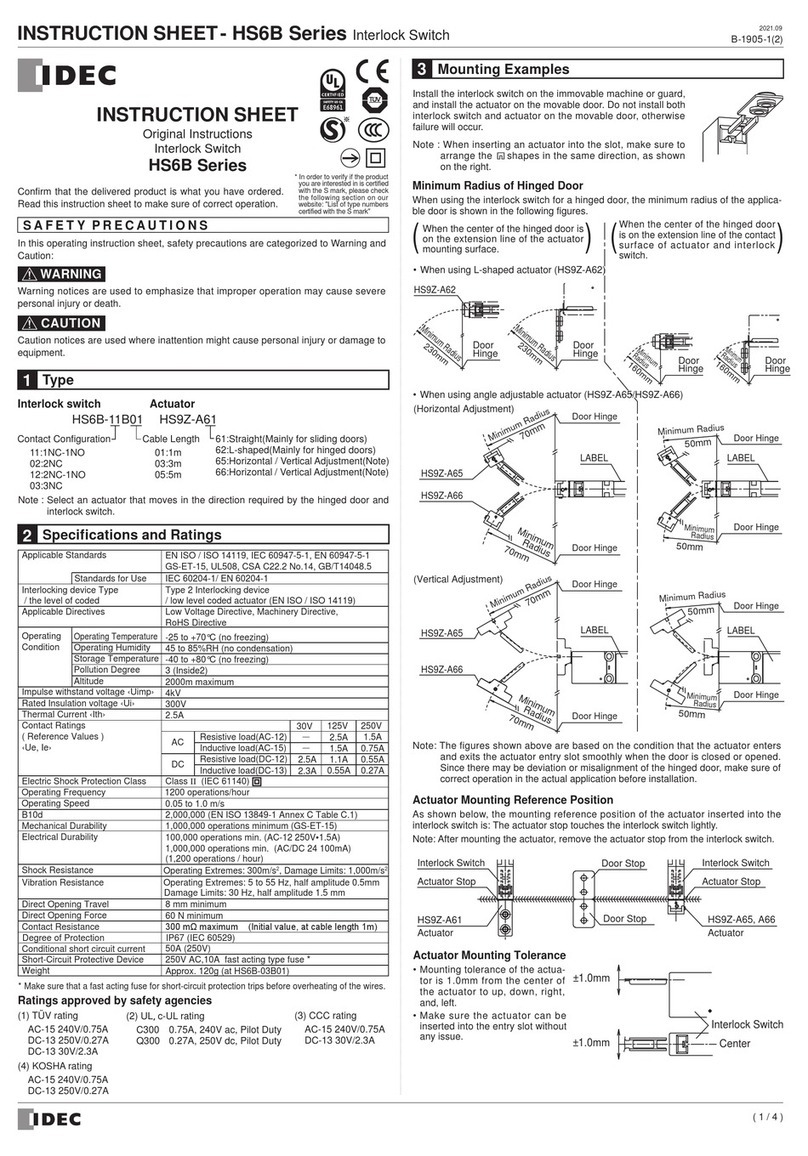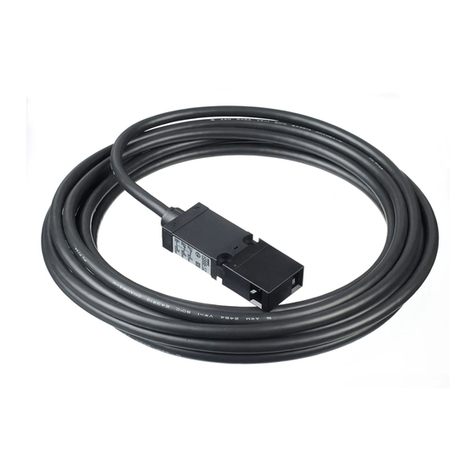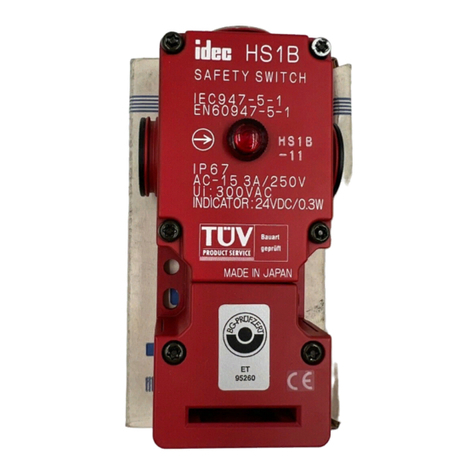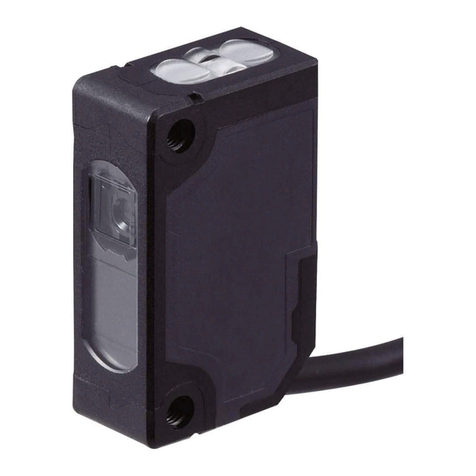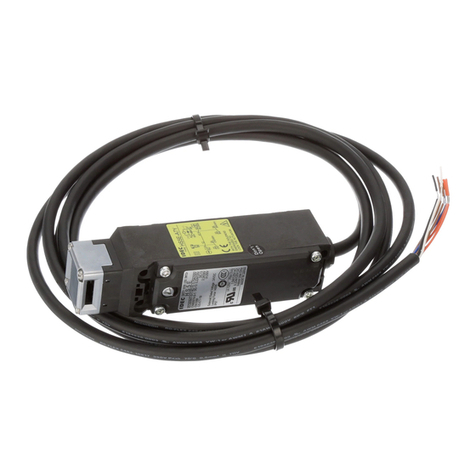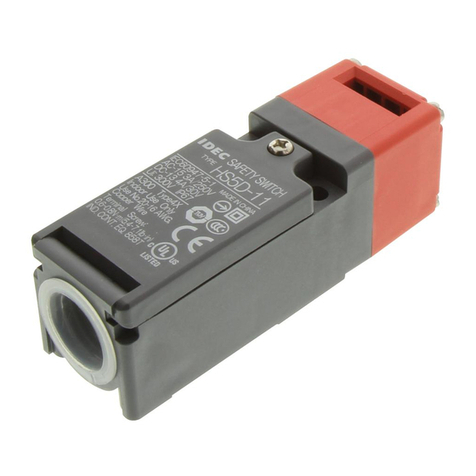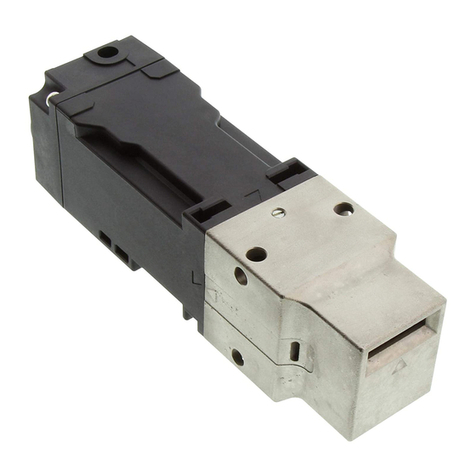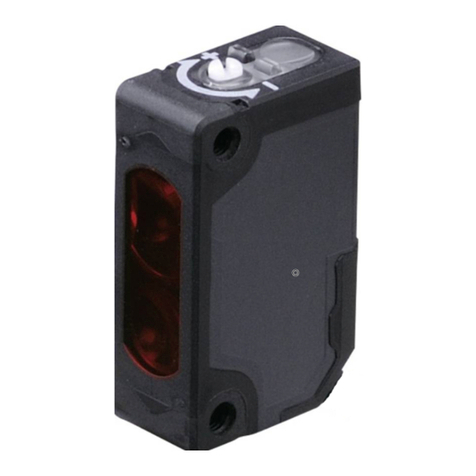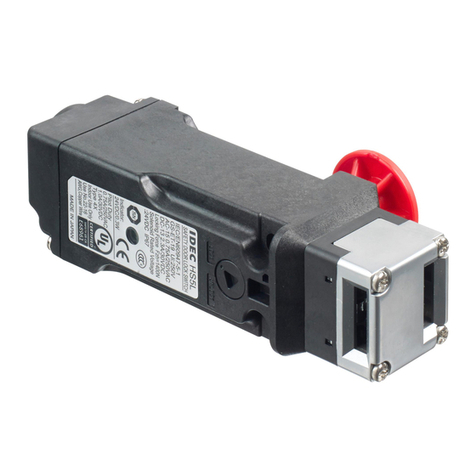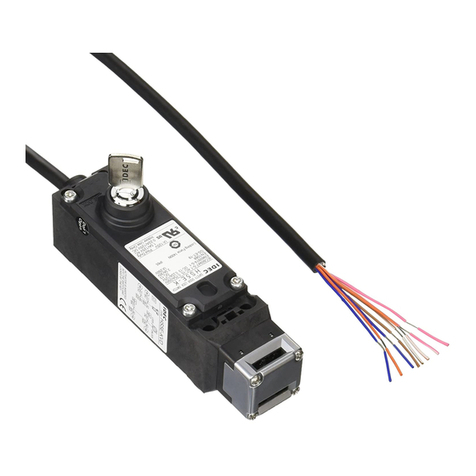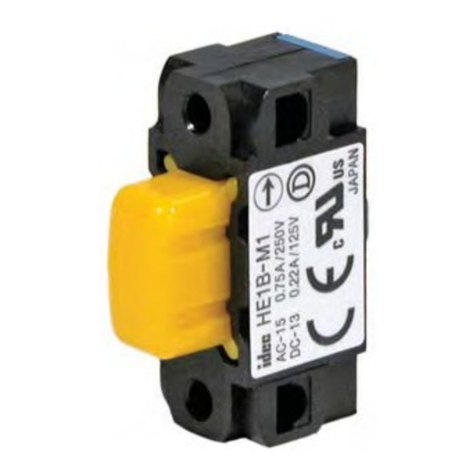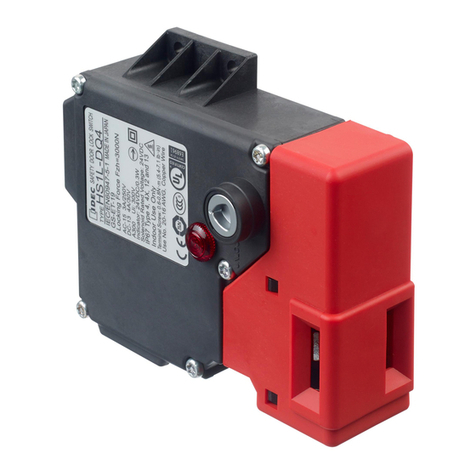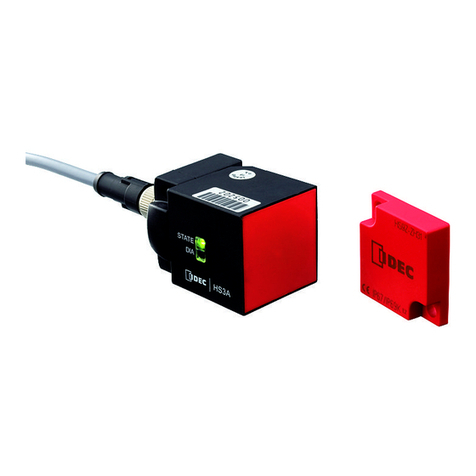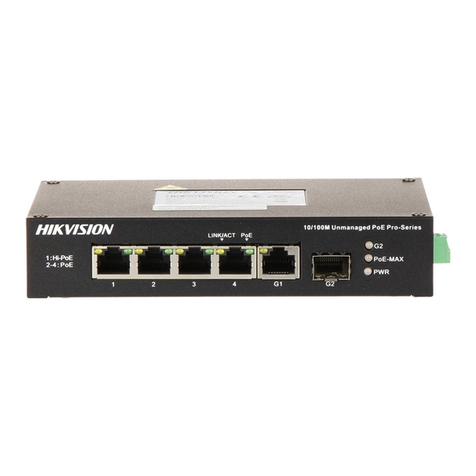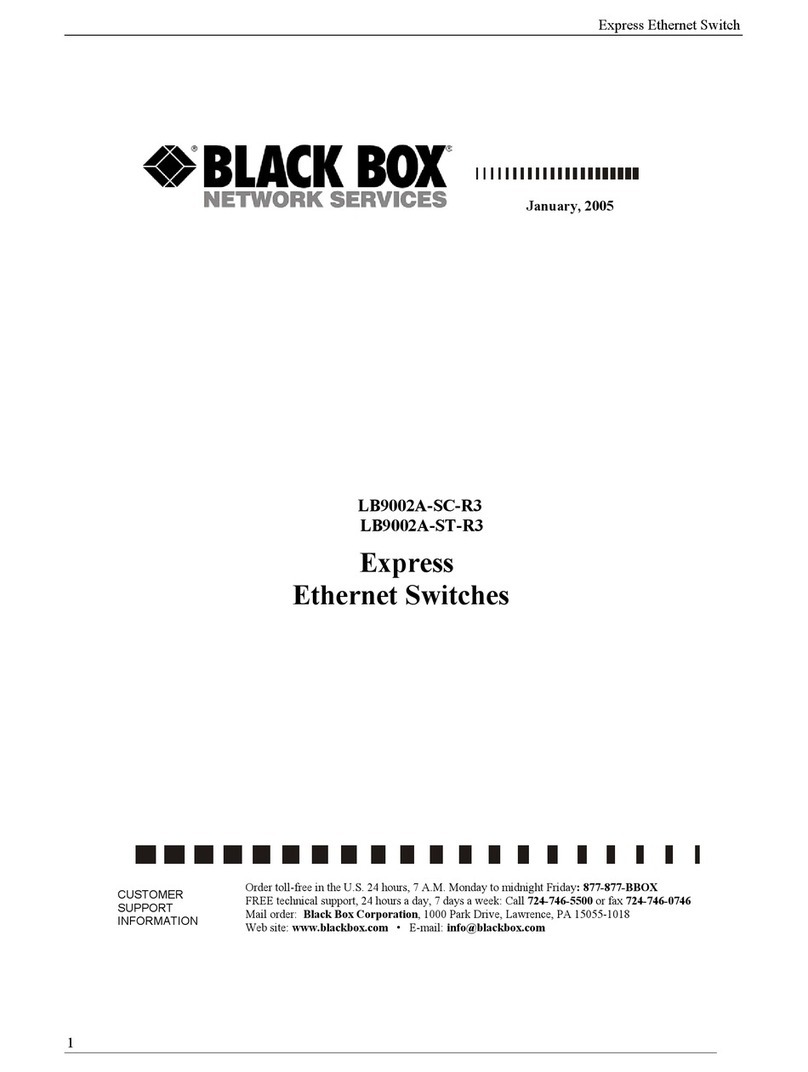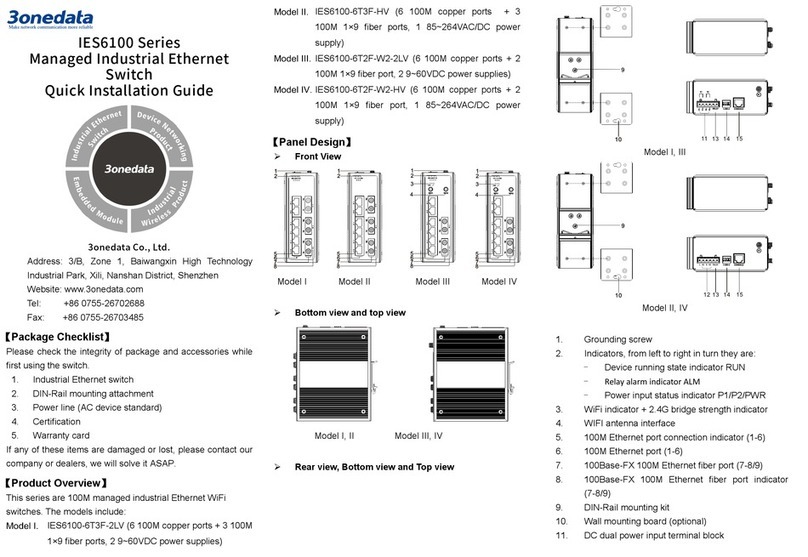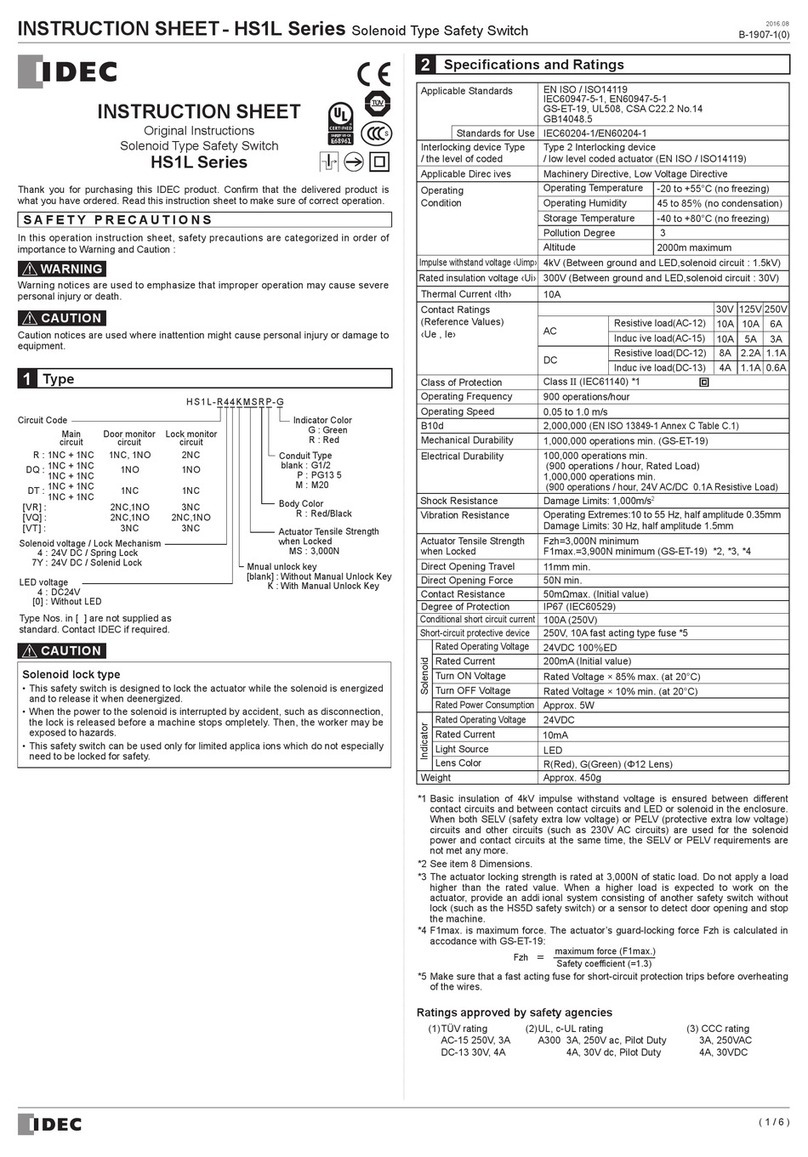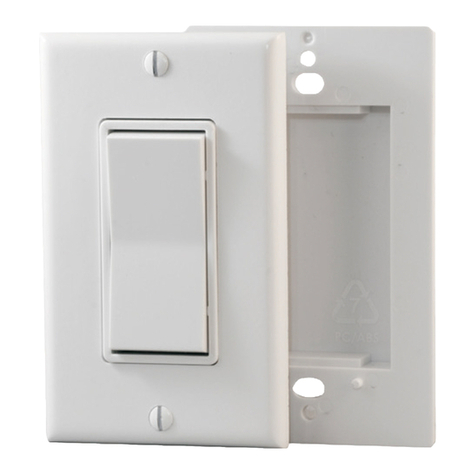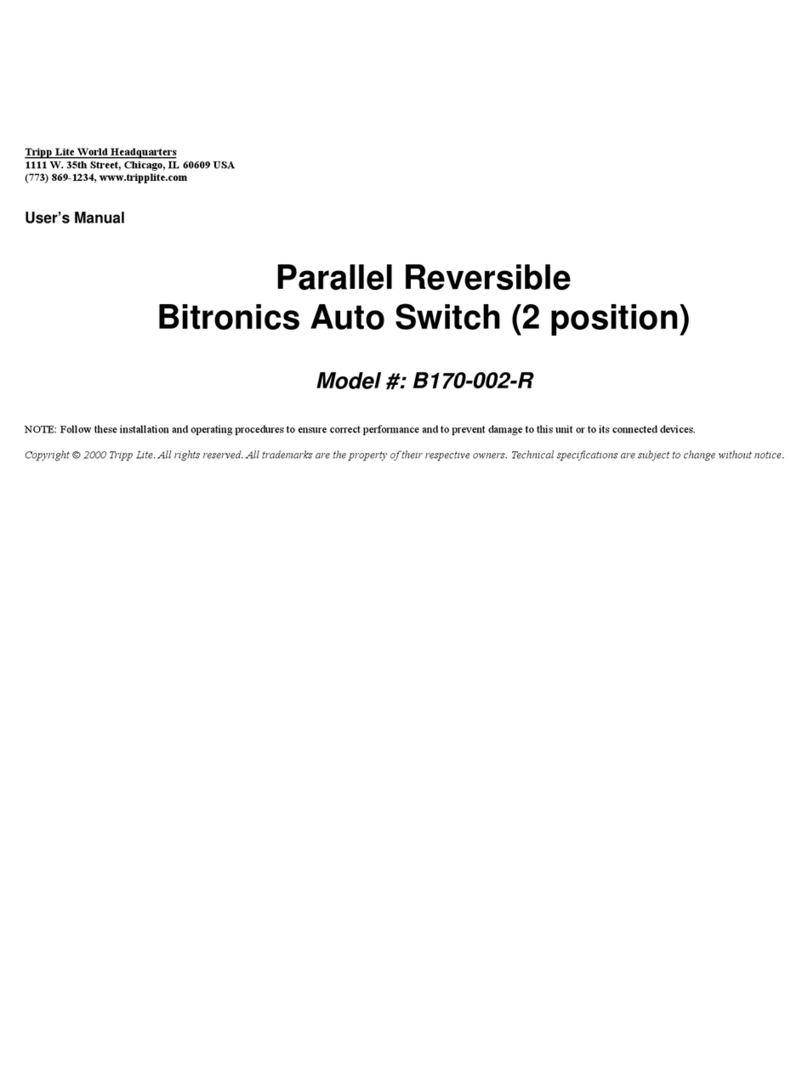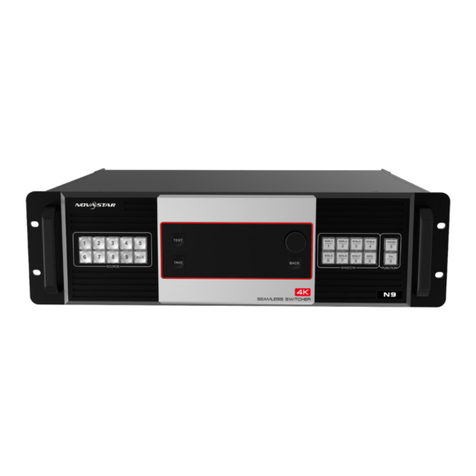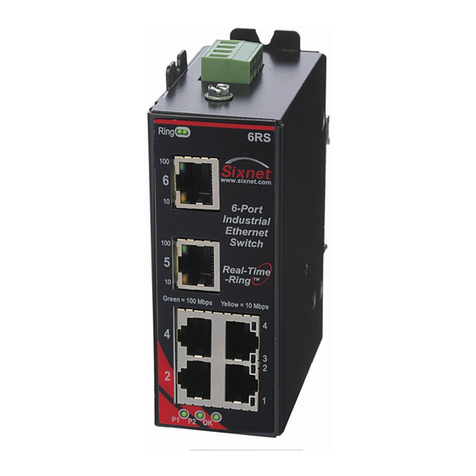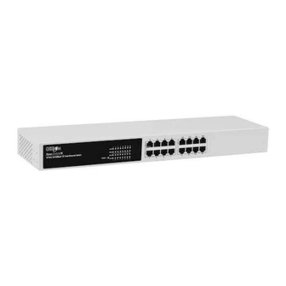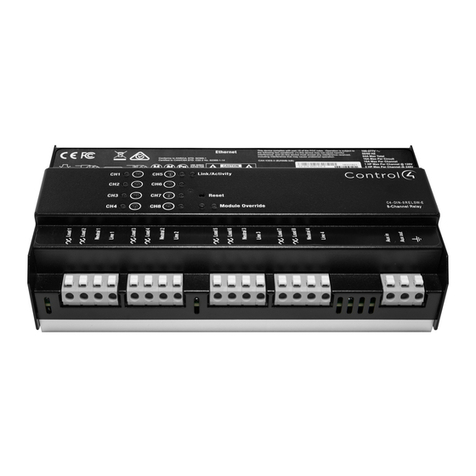
B-1906-1(0)
INSTRUCTION SHEET - HS6E Series Solenoid Type Safety Switch
( 2 / 6 )
2016.08
4Precautions for Operation
For Mounting
• Do not apply an excessive shock to the safety switch when opening or closing the
door.A shock to the safety switch exceeding 1,000m/s2may cause failure.
• Provide a door guide, and ensure that force is applied on the safety switch only in
the actuator insertion direction.
• Do not pull the actuator while it is locked. Also, regardless of door types, do not use
the safety switch as a door lock. Install a separate lock as shown in section 3.
• Entry of foreign objects in the actuator entry slot may affect the mechanism of the
switch and cause a breakdown. If the operating atmosphere is contaminated, use a
protective cover to prevent the entry of foreign objects into the switch through the
actuator entry slots.
• Make sure to install the product in a safe place out of reach. Make sure to conduct a
proper risk assessment evaluation before using the product, and use a shield or a
cover to protect the product if need be.
• While the solenoid is energized, the switch temperature rises approx-
imately 35°C above the ambient temperature (to approximately 85°C
while the ambient temperature is 50°C). Keep hands off to prevent
burns. If cables come into contact with the switch, use heat-resistant
cables.
The Adjustable (vertical/horizontal) Actuator
• Using the angle adjustment screw (M3 hexagon socket set screw), the actuator
angle can be adjusted up to 20°(refer to dimensions).
• The larger the actuator angle, the smaller the applicable radius of the door swing.
After installing the actuator, open the door. Then adjust the actuator angle so that he
actuator enters the entry slot of the safety switch properly.
• After adjusting the actuator angle, apply loctite or the like on the adjustment screw to
prevent loosening. Use screw locking agent that is compatible with the base
material.
Base : PA66 (66 nylon) of glass reinforced grade
Angle adjustment screws : stainless steel
Installing the Safety Switch and Actuator
• When installing the actuator, position the
actuator using the actuator stop (for
positioning the entry slot center and
mounting reference position).
• As shown on the right, the mounting
reference position of the actuator when
inserted in the safety switch is where the
actuator stop touches the actuator.
• Install a door stop as shown on the right
to protect the safety switch and actuator
against excessive force. Do not use the
safety switch as a door stop, otherewise
the safety switch will be damaged.
0.8mm
Safety Switch Latch
Actuator Stop
HS9Z-A61
Actuator Door Stop
Mounting
Reference
Door Stop
• After removing the actuator stop, ensure that the actuator is installed within the
tolerances shown below.
From he entry slot center of the safety switch (*5, 6) : ±1.0mm
The gap between the actuator shoulder and the safety switch surface (*7)
HS9Z-A61/-A62/-A65/-A66 : 1.9mm or shorter
HS9Z-A62S : 1.3mm or shorter
• To ensure correct operation, it is recommended to fasten the door using a latch to
achieve the above tolerance values.
• Make sure the actuator can be inserted into the entry slot without any issue.
• Perform operation test before starting operation in order to confirm the open/close
operation of contacts and locking/unlocking operation.
• When the actuator is pulled while locked in the safety switch, the actuator moves
within the range shown below.
HS9Z-A61/-A62/-A65/-A66 : 4.1mm maximum from the safety switch surface
HS9Z-A62S : 3.5mm maximum from the safety switch surface
The open/close status of the contacts are maintained within the range.When a gap is
caused because of actuator relocation, make sure that the gap does not lead to new
risks.
±1.0mm
(*6)
±1.0mm
(*5)
Entry
Direction
1.9mm(*7)
When using
HS9Z-A61
Safety Switch
Surface
Minimum Radius of Hinged Door
• When using the safety switch for a hinged door, the minimum radius of the applica-
ble door is shown in the following figures.
When the center of the hinged
door ison the extension line of the
actuatormounting surfase.
When the center of the hinged
door ison he extension line of
the contact surfaceof actuator
and safety switch.
HS9Z-A62/-A62S
R1
230mm
70mm
(Horizontal Swing)
R2
230mm
70mm
(Vertical Swing)
R3
160mm
50mm
(Horizontal Swing)
R4
160mm
50mm
(Vertical Swing)
Minimum Radius
HS9Z-A65/-A66
The values shown above are based on the condition that the
actuator enters and exits the actuator entry slot smoothly
when the door is closed or opened.
Since there may be devia ion or dislocation of the hinged
door, make sure of correct operation in the actual applica-
tion before installation.
When inserting an actuator into the slot, make sure to
arrange the shapes in the same direction, as shown on
the right.
R3
Minimum
Radius
Door
Hinge
Door
Hinge
Door
Hinge
Door
Hinge
R4
Minimum
Radius
Minimum
Radius
R1
Minimum
Radius
R2
Recommended Screw Tightening Torque
Name or Use
For mounting the safety switch ( M4 screw ) *8
For mounting the actuator ( M4 screw ) *8
Screw Tightening Torque
1.0 to 1 5 N•m
1.0 to 1 5 N•m
HS9Z-A61, HS9Z-A62, HS9Z-A62S ACTUATOR
• When there is a displacement of safety switch and actuator, the actuator may hit the
entry lot of safety switch hardly, thus damaging the entry slot and actuator. The
rubber cushions on the HS9Z actuator prevent the actuator from damaging the entry
slit by absorbing the shock with movement flexibility. Do not, however, exert exces-
sive shocks, otherwise the failure of safety switch may be caused.
• The rubber cushions may deteriorate depending on the operatiing environment and
conditions. Immediately replace the deformed or crasked rubber cushions with new
ones.
*8 When he torque is not enough to recommended screw tightening torque, make
sure that he screw do not become loose by using adhesive sealants etc. to
keep right operation and mounting positioning.
Mounting HS9Z-A62S actuator
Using two M4 screws and plate, fasten the
actuator securely on the door.
Plate has directionality. Do not lose the
plate. The actuator may fall off from the
door if there is no plate, and the actuator
does not properly.
The tensile strength of the HS9Z-A62
actuator is 100N. If an excessive tensile
force is applied, the actuator may fall off
the door. When a tensile force exceeding 100N is expected, use the HS9S-A62S
actuator with a plate.
Rubber Cushion
Plate(supplied)
M4 Screw
Door
M4 Mountion holes
3Mounting Examples
(Examples of Mounting on Sliding Doors) (Examples of Mounting on Hinged Doors)
Door
Door Stop
HS9Z-A62S
Actuator
HS9Z-A61
Actuator
Latch
HS6E
Safety Switch
• Install the interlock switch on the immovable machine or guard, and install the
actuator on the movable door. Do not install both interlock switch and actuator on
themovable door, otherwise the angle of insertion of the actuator to the safety switch
may become inappropriate, and failure will occur.






